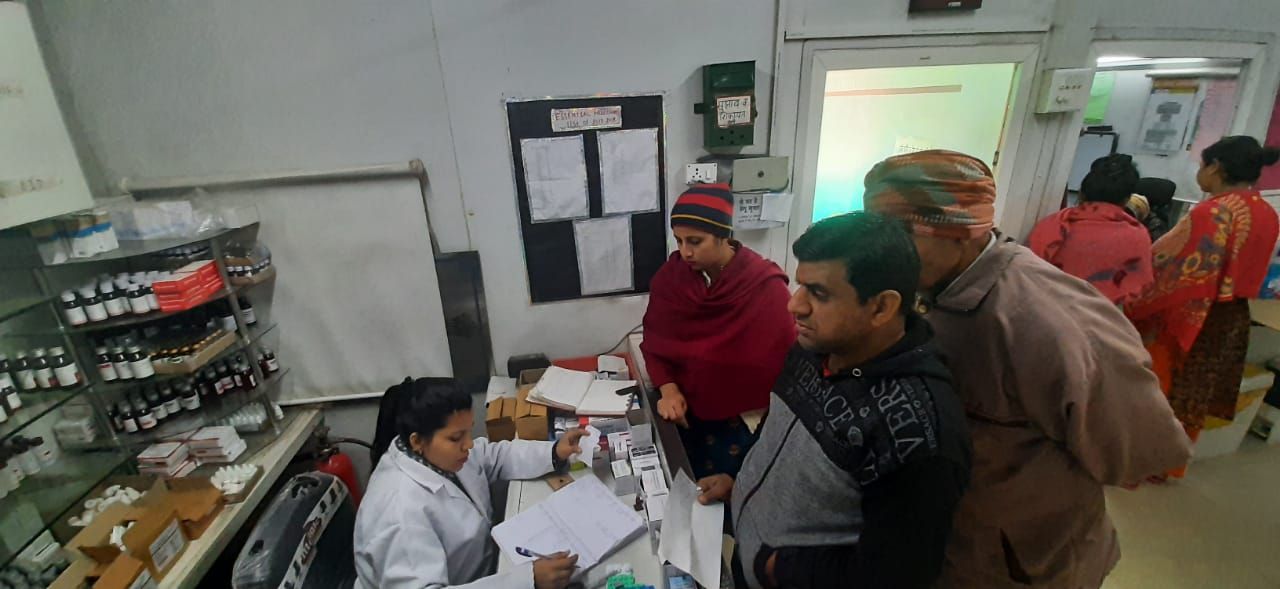
Chinks that AAP is concealing in its health, education armoury
In the Aam Aadmi Party (AAP) and the Bharatiya Janata Party (BJP)’s ongoing war of words and exchange of videos of claims and counter claims about the state of education and health sectors in Delhi, the truth lies somewhere in the middle.

In the Aam Aadmi Party (AAP) and the Bharatiya Janata Party (BJP)’s ongoing war of words and exchange of videos of claims and counter claims about the state of education and health sectors in Delhi, the truth lies somewhere in the middle.
The AAP government claims to have built 450 neighbourhood primary health care clinics called Aam Aadmi Mohallah Clinics with a target to ensure that every Delhiite gets free healthcare facilities within a radius of one kilometre of his/her home.
In the education sector, it gave a varied figure of building 8,000 to 20,000 new classrooms in the existing 30 schools as against the promise of building 500 new schools.
The BJP has rubbished the AAP’s success story claims and released several videos of purported government schools in dilapidated conditions.
Also read: My father taught us Gita, how can he be a terrorist then?: Kejriwal’s daughter
Countering the BJP, the AAP moved the Election Commission seeking a 48-hour campaigning ban on Union Home Minister Amit Shah for allegedly tweeting a “fake” video of Delhi government schools. It also sought action against three BJP MPs for allegedly sharing similar fake videos.
True, the AAP has fallen way short of its promised target, but a trip to some key constituencies in the capital reveals a marked change in the infrastructure of several government-run schools and primary health care reaching many neighbourhoods.
Mohallah clinics a hit, but hospitals suffer
In Rajiv Gandhi JJ Punjabi Colony at the entrance of the Peeragarhi relief camp, Delhi’s first mohallah (neighbourhood) clinic was inaugurated in July 2015, five months after the AAP government came to power.
The clinic now runs in two shifts — from 7am to 2pm and 2pm to 7pm — to cope with the growing rush of patients.
Dr Jeyashree, a doctor at the clinic says, on an average the facility handles 200-250 patients daily. Apart from one doctor in each shift, the clinic has a nurse, a lab assistant for collecting blood samples and a store keeper for disbursing medicines and keeping records.
To run the evening shift, private practitioners have been empanelled.
The clinic caters to a population of around 10,000, primarily comprising victims of the 1984 anti-Sikh riots.
Apart from primary care, the clinic extends services such as blood sugar test, family planning and immunisation as well.
In several other localities such as Rohtak Road, Paschim Vihar, Trilokpuri and Pitampura to name a few, the mohallah clinics have become a go-to place for residents for their primary health care facilities.
Also read: Communal, class narratives hold key to Delhi election
Of the three-tier universal health care system, experts say, the AAP government gave most of its attention and resources in developing the first tier of the project which constituted mohallah clinics.
The dispensaries and the hospitals by and large remain neglected, though a few of the state’s 200 dispensaries have been upgraded to polyclinics.
According to state health department sources, Delhi is facing severe shortage of doctors to run its health care system which has undergone a massive expansion with the setting up of mohallah clinics. According to the department’s estimate, there is a 30 per cent shortage of doctors even after empanelling private practitioners and recruiting physicians on contract or ad-hoc basis.
Even infrastructure in the 37 state government-run hospitals have not seen any marked improvement during the AAP regime.
Hard facts in education sector
In the education sector too, there is a visible improvement in the school’s infrastructure and facilities, but beneath the veneer of these success stories, lies some hard facts and unpleasant statistics.
According to sources, of the 1,150 posts of principal in government schools, around 900 are currently lying vacant.
Contractual, ad-hoc or guest teachers constitute the bulk of teaching force in all the government schools. The Delhi Subordinate Selection Board in response to a Delhi high Court’s affidavit admitted last year that a whopping 77 per cent ad-hoc teachers of the government schools failed to secure pass mark for permanent recruitment as teachers.
Apart from shortage of teachers, excessive interference of the 14-member school management committee (SMC) in the functioning of the school too is coming in the way of smooth functioning of the institutions.
Every SMC has one representative from the local MLA and a social worker apart from parents. Most principals allege that political nominees in the SMC function as quasi-authorities and try to wield influence over administrative or functioning head of the institutions.
These lapses punch a hole in AAP’s success stories. But as there is no serious challenger to exploit the lacunae in the AAP’s narratives, health and education continue to play a second fiddle to emotive issues and gimmicks.
Also read: Delhi elections: AAP, BJP and the curious case of Congress
Our seriousness as nation on these crucial matters can well be gauged by the election commission’s decision to hold assembly elections just days ahead of the commencement of the Class 12 board examinations.
The decision has severely affected the preparations of the students.
“Out of 150 teachers in my school, 80 are busy in election duties forcing us to merge two to three classes together,” pointed out principal of a Delhi government school.

